This is the last part of our three-part series on everything you need to know for hammock camping. Like I’ve mentioned in the previous posts, this series is for all the beginners out there. Those of you that have been hammock camping for some time might still find a few good nuggets of wisdom. In case you came across this article first, here is a breakdown of the entire series so you can either start back at the beginning or just catch the last article.
Part One: Moving off the Ground
Part one details switching from a tent to a hammock and the benefits of doing so. I will also be discussing the pros and cons of hammock camping so you can decide if it’s right for you. There will be information on debunking the common misconceptions about hammock camping as well.
Part Two: The Gear You’ll Need
Part two gets into the nitty-gritty of hammock camping and talks about everything you need to get started. I will run through all the gear and equipment you will need and give explanations on why you need to have it. I also get into some optional gear that isn’t necessary, but just nice to have.
Part Three: What You Need To Know
Once you understand all the good, the bad, and the ugly of hammock camping, as well as all the gear you will need, I get into the things you should know before setting up your hammock for the first time. This part of the series will give you tips and tricks to ensure you have the best night’s sleep ever.
The Skills You Need to Hammock Camp
When it boils down to it, hammock camping isn’t as easy as tent camping. I know there are people out there that will disagree with me, but I would ask those people to look back to when they started and count the mistakes they made and wish they had been told about ahead of time. I’m not afraid to tell you all the bad things about hammock camping or the mistakes I made as a beginner.
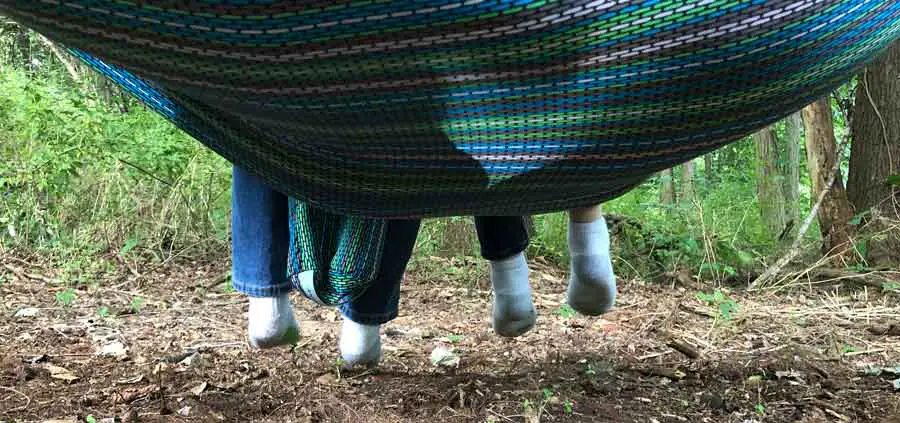
I’ve said many times that hammock camping is a science and it takes time to get the hang of. See what I did there? The list of things you need to know for hammock camping is much longer than what you need to know to camp in a tent. Experimentation and testing things out are a huge part of the hammock camping experience. There is a learning curve. Reading articles like this one and watching videos on YouTube will only get you so far. You need to take action on everything you learn and find what is going to work well for you. Things aren’t always as they seem so try things out for yourself. You may be surprised at what you learn.
Hammock camping has many variables and options as opposed to tent camping. You need to have grit when you are getting into hammock camping. What I mean by grit is that you need to persevere and not give up if you have a bad night’s sleep. When you have a bad night, you’ve just identified that something isn’t working. Keep searching for what will work.
I have said multiple times on various topics when I first started out I had a few nights that just… well, to be frank, were terrible. They were either really cold nights or uncomfortable nights. Those nights as bad as they were they did provide me with some great knowledge and desire to never have a night like that again.
So I’m going to get into all the skills you need to acquire to be great at hammock camping. Some of these are must knows, others are just going to give you a little more of an advantage, but you don’t need to know to get started.
Preparation Before The Hang
When you first get your hammock it’s tempting to just run off to the woods and try it out right away. However, trust me when I say you need to prepare ahead of time so you will know what you are doing when you get out there.
Selecting Trees
Selecting the right trees to hang is something that you need to be a master at. This isn’t hard to do, but it does take practice. There are multiple aspects to selecting the right trees to ensure you hang your hammock safely. I’ll give a quick synopsis here, but if you want to learn more (which I highly recommend) the in-depth article I wrote on how to select the right trees will be down below.
ALSO READ: 12 Tips for Choosing Trees for Hanging Your Hammock
Size
The size of the tree you choose is important. If you don’t select the right trees you could harm them or even kill them. Not to mention you could get hurt as well. If you hang from a small tree, the force of the hammock will be too great and the tree will snap and then potentially fall on you. You want to make sure you find a good-sized tree with a trunk that measures at least 1-foot in diameter. No less.
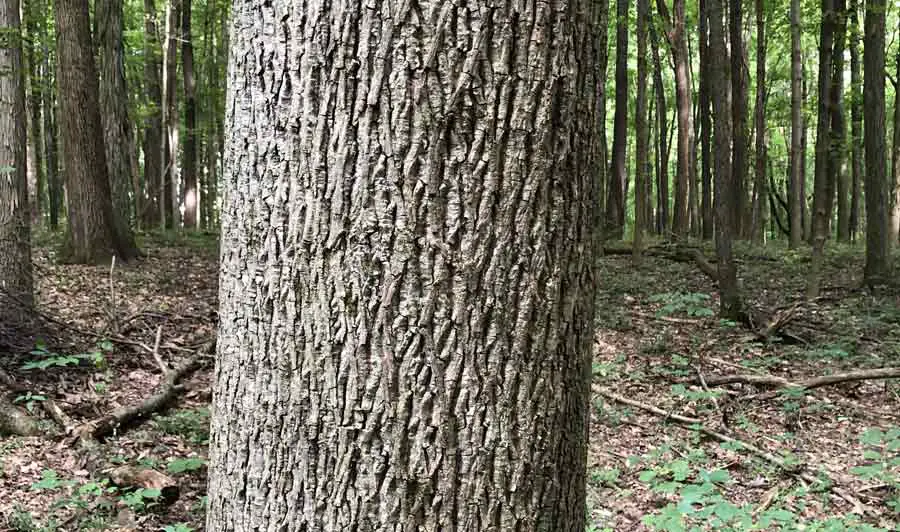
Distance
The distance between trees is also something to pay attention to. If the trees are too close together, you won’t be able to hang properly and get a good angle. On the other side of that coin, if the trees are too far apart, you won’t have enough strap length to clip your hammock. I try to find trees that are about five to six paces from each other. Eventually you will be able to eye the right distance. That just comes with practice. However, in the beginning, I recommend counting paces to make sure.
The Widowmakers
Widowmakers are crucial to understand and know about. Widowmakers. What are widowmakers? They are dead branches that are still attached to living trees. They have the potential of falling on you while you’re in your hammock. They are no joke. You could be badly injured or killed.
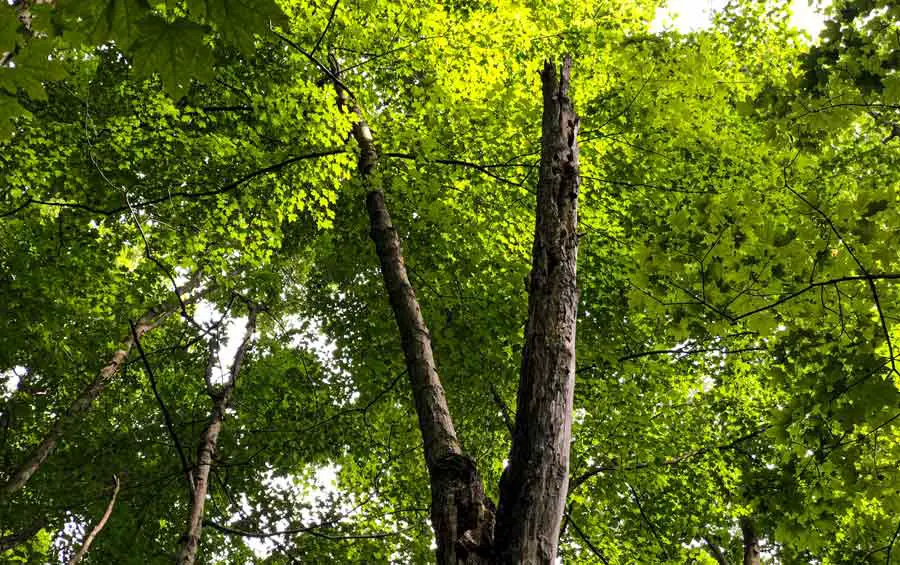
You need to always be looking for these dead branches in the canopy.. If you are camping in the woods and you find the perfect tree, the next step is to always lookup. You DON’T EVER want to hang from a tree that has a widowmaker or dead tree branch attached to it. Follow the tree trunk up and make sure. Sometimes they can be hiding in the tree and difficult to see due to all the leaves. If you see a widowmaker in the tree you plan to use or in neighboring trees, move on and find another spot. The last thing you want is to be sleeping and strong winds come in during the night and break that branch free and that branch comes down on you. It has the potential of hurting you, or even worse killing you, hence the name widowmaker. Be careful and be safe at all times and know what to look for.
The Area
The advantage of hammock camping is that you have a lot more options than a tent camper for setting up camp. Hammock campers don’t have to find flat land to set up and can even set up on the sides of hills. However, you need to know the area that you choose to hang and be aware of some of the dangers that could be lurking around.
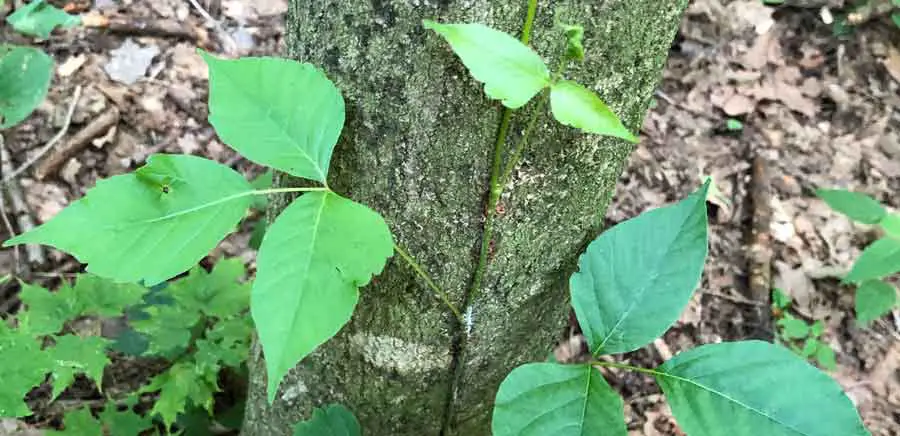
First up are the poisonous plants. There are a few varieties of poisonous plants that can be on and around trees. Poison Ivy, Oak, and Sumac are plants you need to be aware of and be able to identify. If you don’t know what you are looking at, you could end up with poisonous plant oils on yourself, your hammock, and your gear. Know how to properly identify these plants. If you are ever in doubt, move on. There are plenty more trees in the woods to choose from.
ALSO READ: Poisonous Plants – Identification
Next up is brush. Yes, you can hang over brush if there are no other options, but be careful. Brush can have thorny plants and shrubs that can be dangerous if you fall into them or get your gear caught on them. The thorns may not look like a big deal, but they are sharp enough to poke through your hammock or tarp and will ruin your gear.
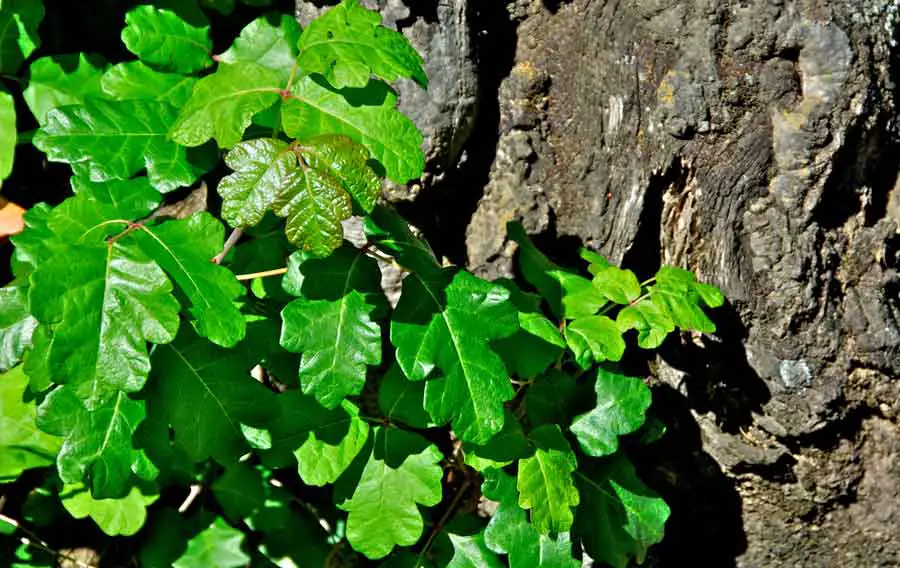
Some people might just hack at them and cut them down so they can hang. I would say yes, you could do that, but the entire point of hammock camping is to be more conservation-minded. At least it is for me and many others I know who hammock camp. Leaving my campsite without disturbing a bit of woods, is always my goal. Cutting down brush or other plants to make it better for you isn’t the best way of going about it. There might be a very rare time where you might need to do so and I’m not judging you if you do this. We can still be friends. There are just so many trees out in the woods there is a good chance you can find another tree set up where you can hang without brush being a bother.
Knots
I have said before that you really don’t need to know many knots when hammock camping. It will all be dependent on the system you choose. There are hammock systems out there like ENO that have ‘No Knot Systems’ where you just need to use your carabiners and straps that wrap around your trees. BUT you will still need to know how to tie a larks head knot – that’s where these all-inclusive setups get people.
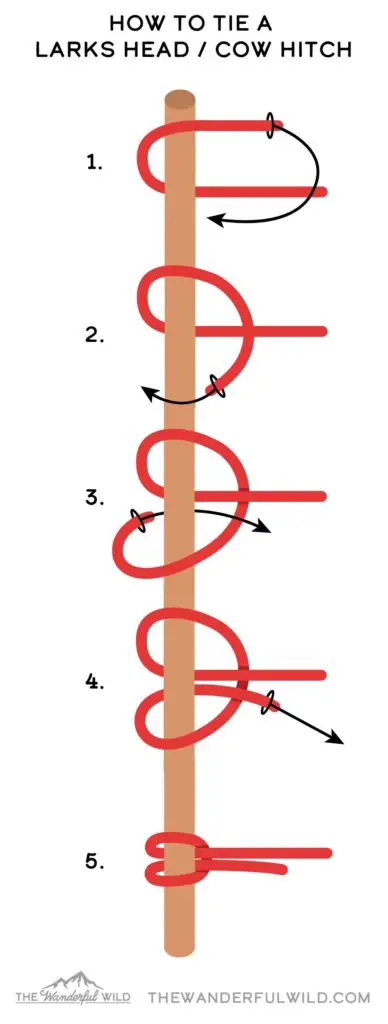
If you don’t want to learn knots, in the beginning, there is nothing wrong with that. As you get more into hammock camping, you will find that in order to experiment and try new setups, you will need to know more than just basic knots. Knowing your knots is a great life skill to have and you will find that you will use all the time in your everyday life once you know how to use them properly. A great example from my own life is that I rigged up a sling for my wife’s arm the other day using my knot knowledge. Yes, she was impressed and I earned some good husband points for that.
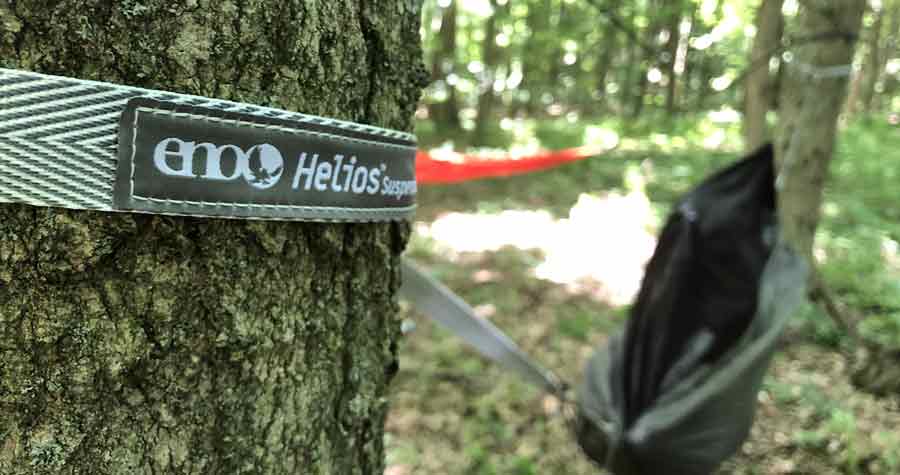
The key to getting really good at knots and committing them to memory is to learn at your own pace and take it one knot at a time. Master each knot and then move on. Then go back and practice the ones you’ve mastered occasionally. I used to always carry a small piece of paracord in my pocket and instead of reaching for my phone when waiting on something or when I got bored, I would practice my knots instead. It’s a great way to keep your kids off of screens as well.
ALSO READ: A Step-by-Step Picture Guide on Knots For Hammock Camping
How to Set Up a Hammock
Once you have the proper gear and the right location, you’re ready to set-up your hammock. This is the most exciting part, especially when you have a new hammock. So here are the main steps you will need to follow to get a great hang the first time you set up.
What to do with your gear
After you have made sure your area and the trees you have chosen are perfect for your slumber above the ground, you need to get your straps. Most straps have one loop at the end and then the other end of the straps will have multiple loops to hang from.
Straps
You want to make sure you take the end with the single loop and wrap it around the tree. Then take the opposite end of the strap and feed it through the loop. Then pull it until it is tight. Make sure the strap is snug and secure (which is a larks head knot) and about five to six feet above the ground.
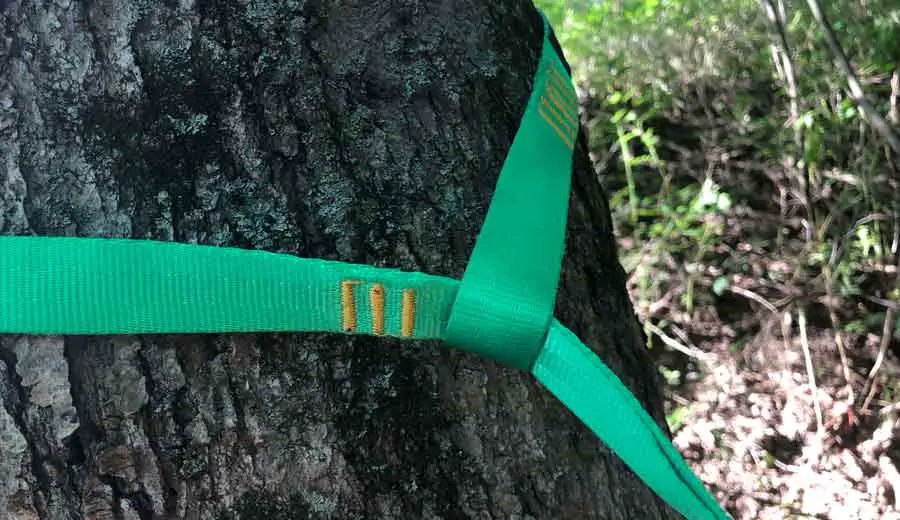
Once you have the first strap secure, move to the next tree and do the exact same thing again with the second strap.
Hammock
Now that you have your straps in place, it’s time to hang your hammock. This will take some back and forth adjustments to get things just right. So don’t get discouraged if you don’t find the proper angle the very first time you clip or secure your hammock to the straps. I have set up my hammocks hundreds of time and even now I still have to do several adjustments to find my ideal angle.
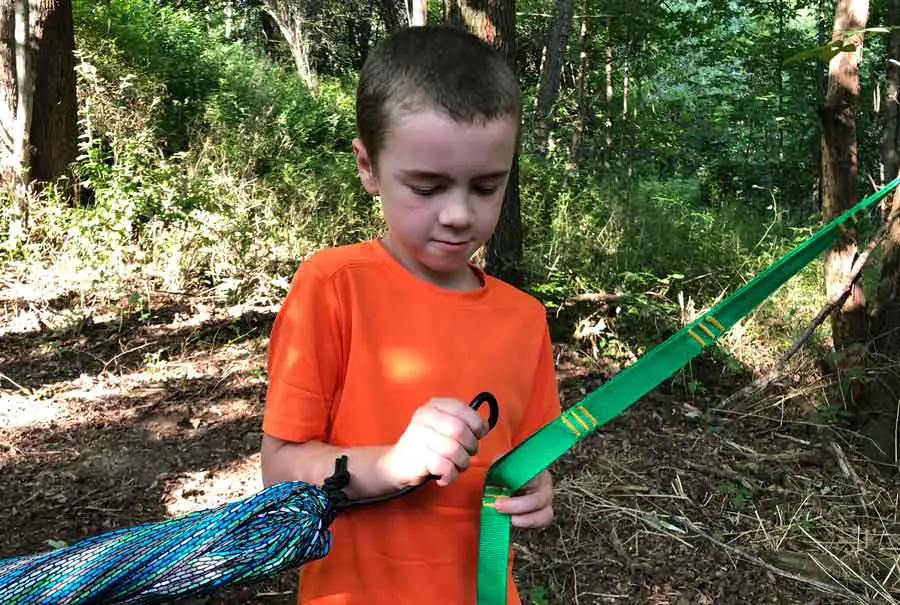
You will want to clip your hammock to the straps in such a way that the hammock is in the middle of the trees. The hammock should be connected to the straps evenly so you’re not hanging super high on one side and super low on the other.
If you have set up properly, the lowest point of the hang will be the middle of the hammock. If it’s wrong, the lowest point will be off to the side and the middle will be higher. If you do run into this, it’s easily fixable. Whichever side is higher, adjust that side of your hammock to make it lower and this will even out the hammock.
Getting the Angle
Once you have the hammock hanging evenly, you now want to focus on the hang angle. Look at the angle of your straps. The perfect hang angle is 30º – at least that what everyone says. This is my caveat to that – you always need to do you. Everyone agrees that 30º is the proper angle because you get the proper amount of sag in your hammock. Having good sag will allow you to get good sleep. I recommend starting out with a 30º angle. Most phones have a level app built-in so I just break out mine and place it on the strap to make sure. When you’re getting started it’s worth using an app or tool like that until you have mastered finding your ideal angle that works best for you.
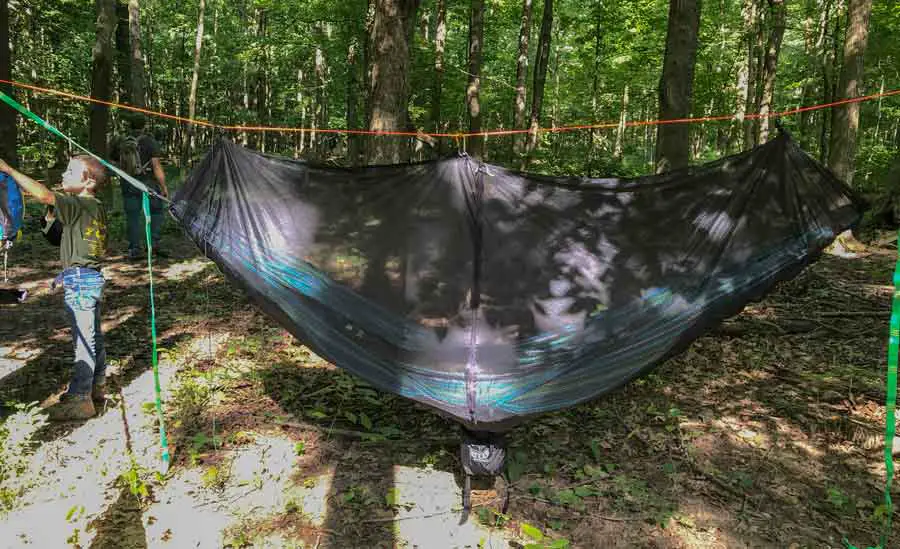
The key is to move back and forth between the straps evenly. You can have too much or too little sag.
When you have too much sag, your body will still be curved even if you straighten and spread out in your hammock – it will be like sleeping in a bowl. Too little sag won’t allow you to straighten your body out in your hammock at all – the hammock will be too tight and you will be in a cocoon. Both of these situations will make for a rather uncomfortable night.
Practice, practice, practice
If you have read anything else from me or my site, you know that I’m always telling people to practice. I feel this concept is often overlooked. Having the knowledge and actually putting it into action are two very different things. People just think that just because they understand the concept of how to hang your hammock that they know all they need to know and don’t need to practice the actual mechanics of setting up their hammock. You need to practice your setup ahead of time and you need to get good and efficient at it. There will be a time in the future that you will thank your past self for practicing. Trust me.
What if it takes you 20 minutes to hang your hammock? Is that wrong?
The first answer is, no. There is no set time on properly setting up your hammock. In the beginning, it might take you a while and that’s fine.
The second answer I would say is also, no, it’s not wrong, but what if it’s raining? What if you suddenly get caught in bad weather and you need to get your camp set up before you and your gear get soaked?
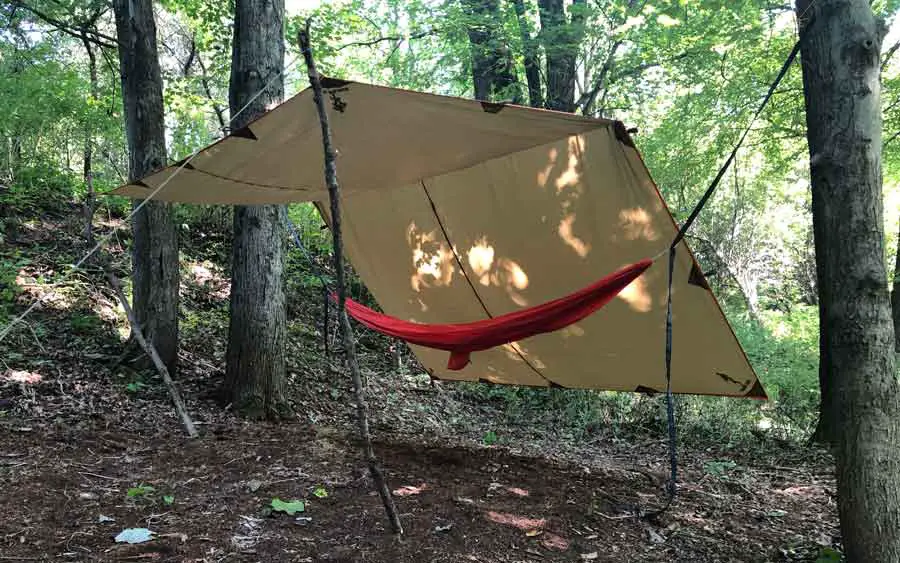
How do you get better and faster at setting up? Well…practice. We all know the old adage “practice makes perfect” and setting up hammocks is no exception to that. The more you do it the better you will get and the faster you will be at doing it. I would say you need to practice quite a bit when you first get started.
Again as I mentioned earlier on, you must have grit. It will take you awhile to set up correctly your first few times and that’s ok. You have to persevere and not give up. Keep practicing until you know everything inside and out and can set up quickly, efficiently, and safely. Don’t give up and keep pushing through. You will be a pro in no time.
ALSO READ: 25 Common Mistakes While Hammock Camping
Is knowing half the battle?
So now that you know everything you need in the beginning to get started, is knowing, really half the battle? I would say no. I honestly think having the knowledge and doing the research is more like 75 percent of the battle.
Having the knowledge before you start out will help you to avoid making the mistakes nearly every beginner hammock camper makes. If you practice, you will be more experienced and comfortable setting up your very first time.
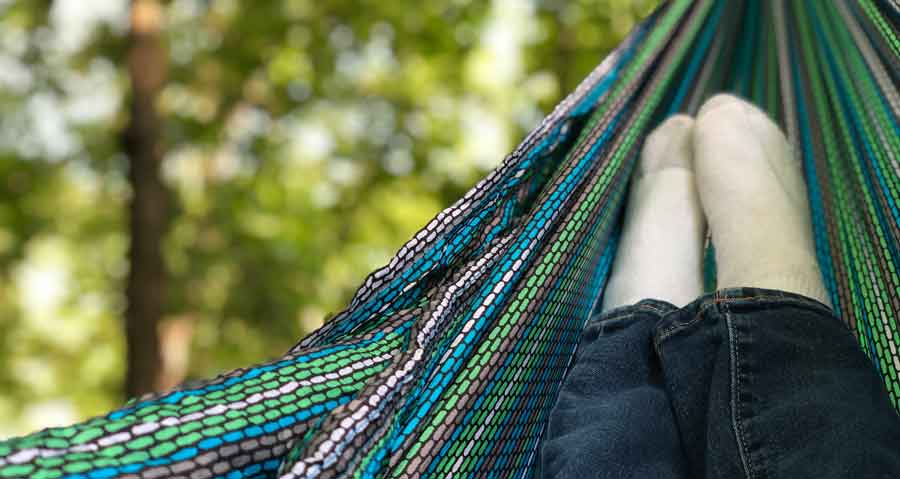
Now let’s talk about the other 25 percent. Experience. The actual mechanics of hammock camping. There’s no substitute for what you learn by actually doing it. As with anything, you will learn the tiny little nuances that make the biggest difference. Things that you can’t learn from a blog, video, or book. These things will be unique to you.
I’m not saying those resources aren’t incredibly useful because they are. Watching how-to videos and reading about others’ expertise and experiences is always a great idea. I highly recommend it. You don’t know what you don’t know. Consuming such content will help you to understand about situations that you may or may not ever be in. That being said, if they ever do happen you will be prepared and have an idea of what to do.
When you actually get out there and do it, you discover that there are other ways or sometimes even better ways to do something than what you originally learned or read about. Just because someone is doing it one way doesn’t mean it’s the best way for you. I hope you test things out and discover alternatives on your journey to becoming a hammock ninja.
Now that you have all this fantastic knowledge about hammock camping, you’re ready to go out in The Wanderful Wild.
